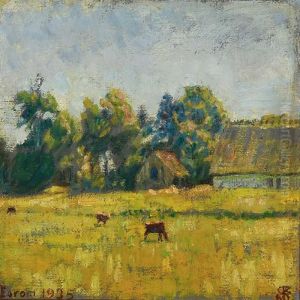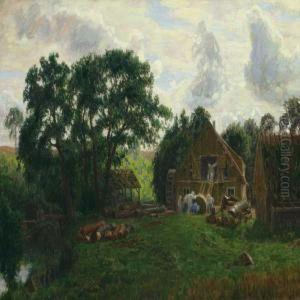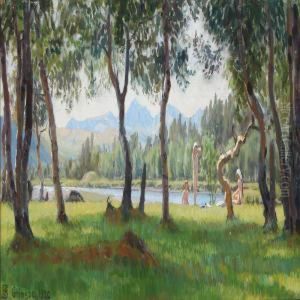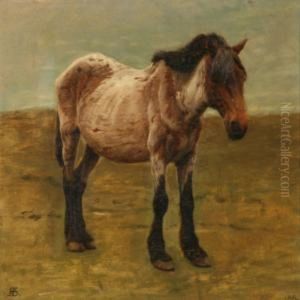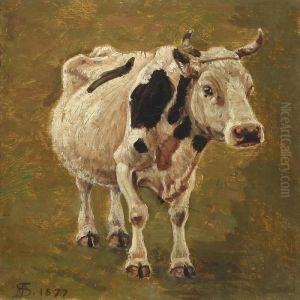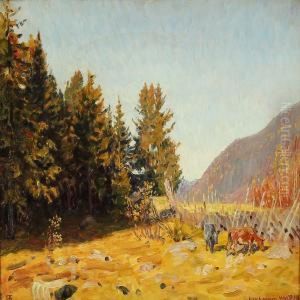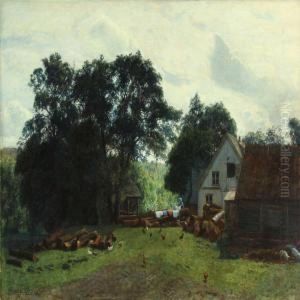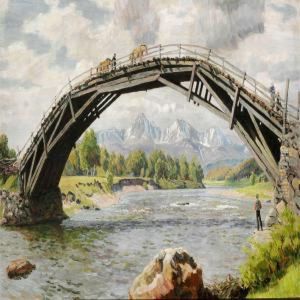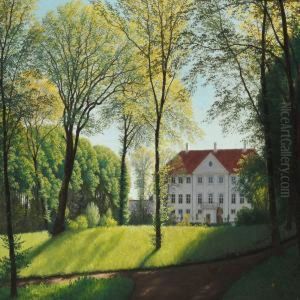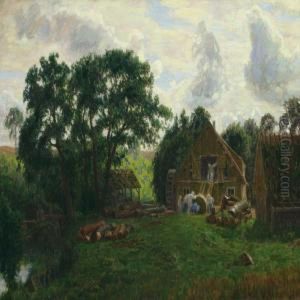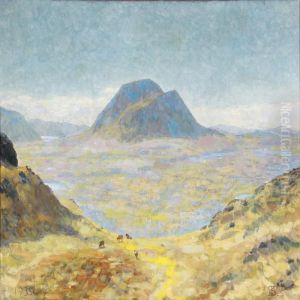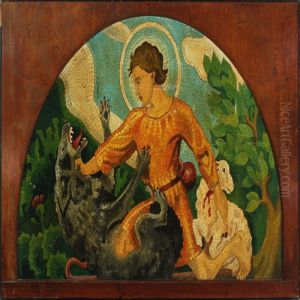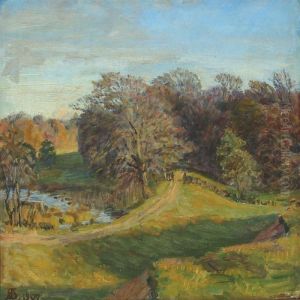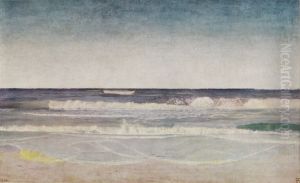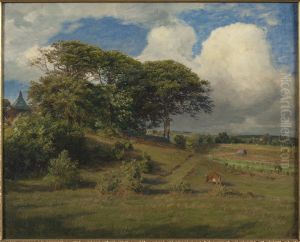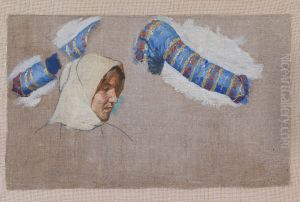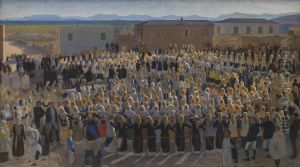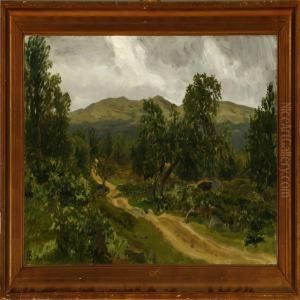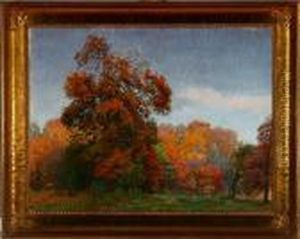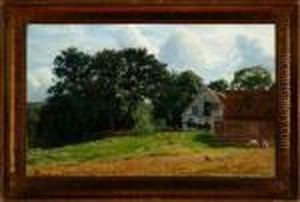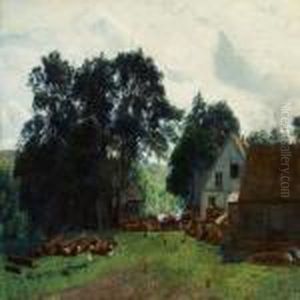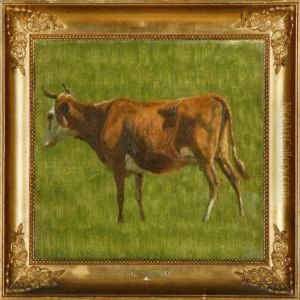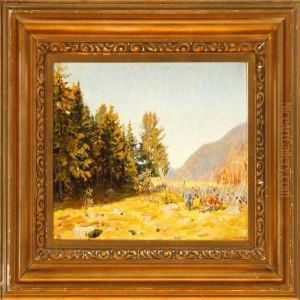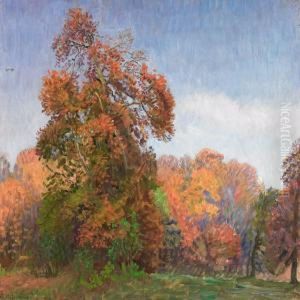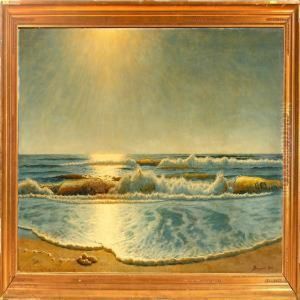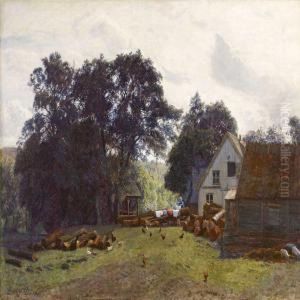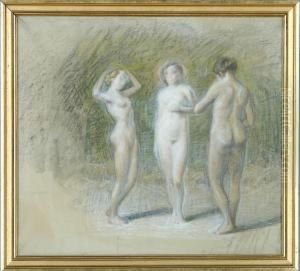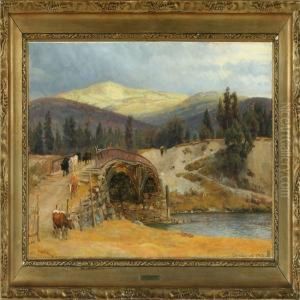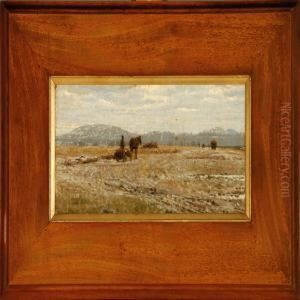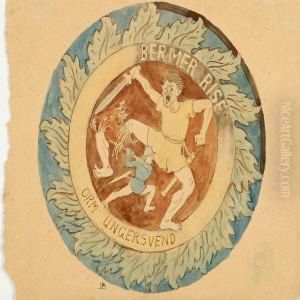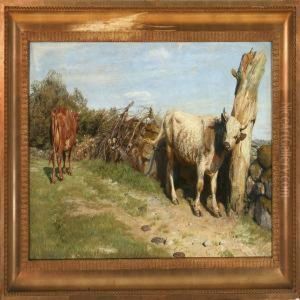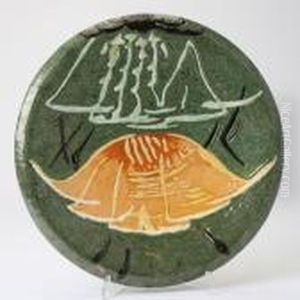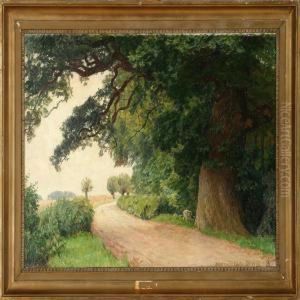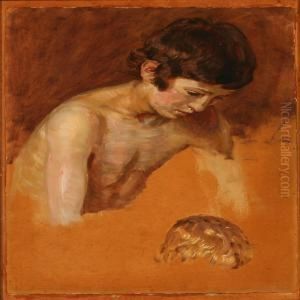Niels Skovgaard Paintings
Niels Skovgaard was a Danish painter, sculptor, and ceramist born on November 6, 1858, in Denmark. He was part of a well-known Danish artists' family, as the brother of painter Joakim Skovgaard and the son of P.C. Skovgaard, who was also a renowned landscape painter. Niels grew up in an environment that was deeply influenced by art, which naturally led him to pursue a career in the same field.
Skovgaard received his artistic education at the Royal Danish Academy of Fine Arts in Copenhagen, where he studied from 1871 to 1882. During his time at the academy, he was influenced by the historicist style, which was a popular movement in Danish art during the 19th century. His early works were characterized by their attention to detail, romanticized view of history, and often contained elements of Danish folklore and mythology.
In addition to painting, Niels Skovgaard was also skilled in sculpture and ceramics. He worked on a variety of projects, including public commissions such as memorials and decorative works for buildings. His style evolved over the years, incorporating the influence of other art movements of his time, such as Symbolism and National Romanticism. Skovgaard's works often reflected his interest in the natural world and the spiritual themes, which were evident in his landscape paintings and allegorical works.
Throughout his career, Niels Skovgaard was active in the Danish art scene. He exhibited his works at various exhibitions, including those held by the Den Frie Udstilling (The Free Exhibition), an artist-run venue established as an alternative to the official Academy exhibitions. He also participated in exhibitions abroad, helping to spread Danish art internationally.
Niels Skovgaard's artistic legacy is significant in Danish cultural history. His works can be found in the collections of several Danish museums, including the Skovgaard Museum in Viborg, which is dedicated to the artworks of the Skovgaard family. Niels Skovgaard passed away on April 9, 1938, leaving behind a body of work that continues to be appreciated for its beauty and historical value.
